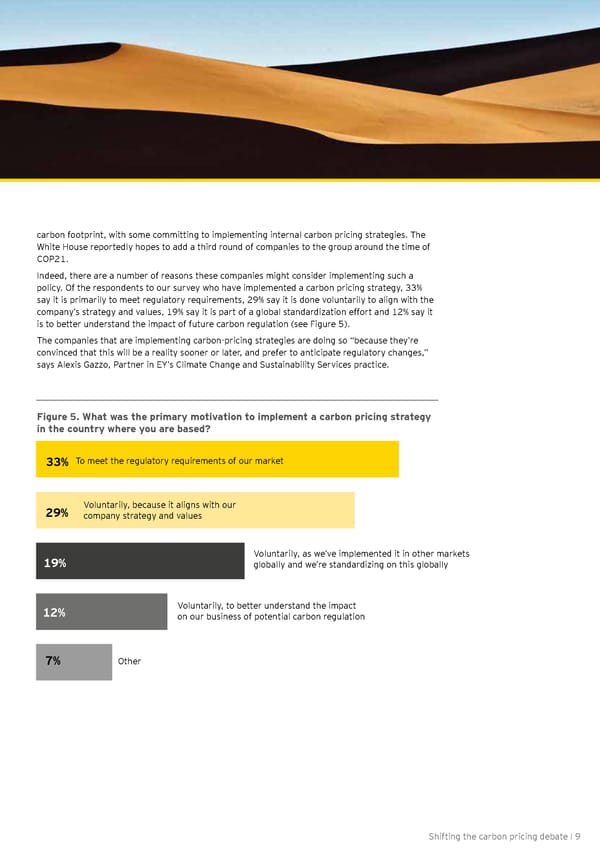carbon footprint, with some committing to implementing internal carbon pricing strategies. The White House reportedly hopes to add a third round of companies to the group around the time of COP21. Indeed, there are a number of reasons these companies might consider implementing such a policy. Of the respondents to our survey who have implemented a carbon pricing strategy, 33% say it is primarily to meet regulatory requirements, 29% say it is done voluntarily to align with the company’s strategy and values, 19% say it is part of a global standardization effort and 12% say it is to better understand the impact of future carbon regulation (see Figure 5). The companies that are implementing carbon-pricing strategies are doing so “because they’re convinced that this will be a reality sooner or later, and prefer to anticipate regulatory changes,” says Alexis Gazzo, Partner in EY’s Climate Change and Sustainability Services practice. Figure 5. What was the primary motivation to implement a carbon pricing strategy in the country where you are based? 33% To meet the regulatory requirements of our market 29% Voluntarily, because it aligns with our company strategy and values 19% Voluntarily, as we’ve implemented it in other markets globally and we’re standardizing on this globally 12% Voluntarily, to better understand the impact on our business of potential carbon regulation 7% Other Shifting the carbon pricing debate I 9
 Shifting the Carbon Pricing Debate Page 8 Page 10
Shifting the Carbon Pricing Debate Page 8 Page 10